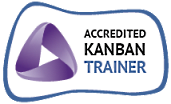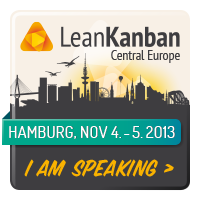I created the so-called “STATIK canvas” several years ago. Several people from faraway countries have asked me about it recently. I’m glad they are using this paper or some variations of it.
STATIK stands for the System Thinking Approach To Introducing Kanban. You apply this approach to model and understand the business environment in which some service is delivered to customers (which may be a product development or a project workflow, to be clear) and to design and introduce a Kanban system with the intent to stimulate this service to improve.
Mike Burrows, who wrote a good guide to STATIK, which is Part III of his book, Kanban from the Inside, called it Kanban’s hidden gem in his conference speeches. I’ve always maintained that the STATIK A3 must then be like a cheap plastic container for the gem. It is still useful and it still works, though.
Now that I see people use this paper, I’d like to make some changes to it and to better communicate my intent for it. Which is what this post is about.
First, I want to stop calling this thing a “canvas.” It was a bad choice of a word on my part. The word “canvas” has recently become meaningless as people produced pieces of paper subdivided into areas to capture information and call them canvases, after the famous Business Model Canvas. Well the Business Model Canvas is a canvas, and it defines the word, in my view. It represents the most closely connected elements, such as customer segments and sales channels to reach them, as regions bordering each other. It uses geometry effectively to visually reinforce the coherence of a business model. Such logic is missing from most other “canvases.” With my STATIK paper it wasn’t even the intention.
(P.S. I’ve revisited my original 2015 post introducing this STATIK paper and found it still largely relevant. Except for the irritating word “canvas.”)
Second, I believe there are better reasons to call this paper an A3. Technically, it fits the A3 size paper (or 11-by-17 inch for North Americans). There are deeper reasons, of course. There was a time in my career when I studied and practiced A3 Thinking seriously. It was my part of my search to become more effective coach and consultant. I got good mentoring in A3 and read original literature on it. I realized there were different layouts of A3, but they all had two things in common. They were all effective at resisting the natural human tendency to jump to conclusions, such as to change something in the problematic process while believing their action would solve that problem. But even if we were to apply some deliberate problem-solving approach, that would still leave us exposed to another tendency: believing which problems were the most worth solving at the moment and leaning on familiar, perhaps ineffective ways to frame them. I learned how the good A3 designs were effective at resisting “jumping to problems” as well.
One natural bias we can observe in the Kanban method is of course how people rush to draw visual Kanban boards visualizing some process. They rush it without understanding all the design choices they’re making implicitly along the way or why they’re making them. This is the “jumping to conclusions” that STATIK counters and that I definitely want the STATIK A3 to resist visually. The STATIK A3 also counters the “jumping to problems” bias. Two key fields occur in the top inch of the paper. One asks you to define the service you’re trying to improve. If you “gathered my team to do STATIK” it may stop you right there. Another one asks, who is the manager here taking responsibility for delivering services to customers? Is this person in the room?
The rest of the STATIK A3 layout has somewhat odd proportions that reinforce similar messages. For example, the Workflow Mapping section allows capturing multiple variations of workflows for different work item types. When people use STATIK A3 in various geographical and industry contexts, they might find different proportions and layouts to be more effective for the same intent. The intent is, of course, not to jump to solutions and not to jump to problems. Instead, analyze carefully what is going on in the service process, what the service provider and customers want to improve in it, and how that informs various Kanban system design choices. And only then some of those choices will make it onto the blurry two-dimensional projection we call the visual Kanban board.













Pingback: Introducing the STATIK Canvas | Connected Knowledge